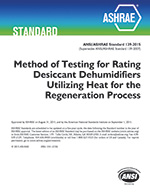When a liquid flows through a heated tube, subcooled nucleate and/or film boiling can take place before the bulk of the fluid reaches its saturation temperature. The thermodynamic flowing mass quality (vapor mass fraction) would be zero in the subcooled boiling region of such an evaporator tube, but depending on the fluid properties, degree of subcooIing, and heat transfer rate, the void fraction could be substantial. Further downstream, the bulk of the fluid reaches the saturation temp corresponding to the local pressure level and net vapor generation commences. In this latter portion of the flow, the vapor generation can take place by additional nucleate boiling and/or by evaporation at existing liquid-vapor interfaces.
We decided therefore to build an experimental facility which permitted testing with different fluids, different diameters and different orientations. Since the majority of the experiments to date are at rather low mass fluxes and heat fluxes, far below critical heat flux, the test loop was designed for maximum mass flux of 6600 kg/sq mps and a heat flux up to 12 x 104 W/sq m in order to cover less investigated territory. Hence our experiments concentrated on the lower quality region, where nucleate boiling is. aSsumed to be dominant.
Citation: ASHRAE Transactions, Volume 79, Part 1, Chicago, IL
Product Details
- Published:
- 1973
- Number of Pages:
- 15
- File Size:
- 1 file , 1.1 MB
- Product Code(s):
- D-CH-2271


